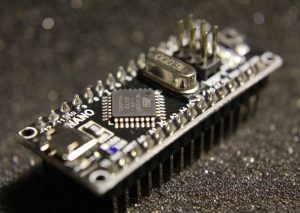 Introduction: The Three Princes of Serendip, where Serendip is the Classical Persian name for Sri Lanka, is a fairy tale in which the protagonists ‘were always making discoveries, by accidents and sagacity, of things they were not in quest of.’ Based on this, Horace Walpole coined the word serendipity in 1754 to mean inventions or discoveries made by accident. Science and technology offer many anecdotes of serendipitous discoveries and inventions. Here is the seventh such story in a series about serendipitous, patented inventions.
Introduction: The Three Princes of Serendip, where Serendip is the Classical Persian name for Sri Lanka, is a fairy tale in which the protagonists ‘were always making discoveries, by accidents and sagacity, of things they were not in quest of.’ Based on this, Horace Walpole coined the word serendipity in 1754 to mean inventions or discoveries made by accident. Science and technology offer many anecdotes of serendipitous discoveries and inventions. Here is the seventh such story in a series about serendipitous, patented inventions.
In the semiconductor industry, dust is the arch-villain, leading to failures and reducing yield. At home, keeping the home clean from accumulating dust is a major chore. Such being the case, the term Smart Dust may appear to be an oxymoron! Let us, however, explore what it means and how it came to be.
Wikipedia® defines Smart Dust as “a system of many tiny microelectromechanical systems (MEMS), such as sensors, robots, or other devices, which can detect, for example, light, temperature, vibration, magnetism, or chemicals. They are usually operated on a computer network wirelessly and are distributed over some area to perform tasks, usually sensing through radio-frequency identification”.
The idea of Smart Dust was not new. As early as the 1990s, Dr. Kristofer S. J. Pister of the University of California at Berkeley had envisioned a world where intelligent wireless sensors could be deployed everywhere, measuring everything that could possibly be measured. The first time the idea was first presented in public under the very name Smart Dust was at a meeting of the American Vacuum Society in Anaheim in 1996. No practical devices, however, were available then.
That changed in the year 2003. A graduate student of chemistry at the University of California in San Diego, Jamie Link, was working on a porous silicon chip. She was in the process of making a thin multi-layer film of porous silicon on a crystalline substrate. One such chip she was working on accidentally broke into two. It was not a disaster but was fortuitous. She observed that each piece retained the properties of the original, leading to the creation of the first example of Smart Dust, which led to a few patents on the subject.
Link and her adviser, Dr. Michael Sailor, discovered that even tiny bits of the chip were still sending signals, operating as tiny sensors. They had invented practical Smart Dust. Link and Sailor’s discovery was the first of its kind and was self-assembling and programmable. This discovery highlighted the potential for these small devices to be used as self-assembling, programmable sensors. Here, “self-assembling” means they can autonomously organise themselves into functional networks. They are designed to spontaneously align and orient themselves in their environment, often using chemical or physical interactions. For example, in some smart dust systems, nowadays, about one cubic millimetre each, the devices can align at interfaces between different materials, such as organic liquids and water, based on their chemical properties. One such Smart Dust is a mirrored surface modified to find and stick to a desired target, changing its colour slightly to indicate what it has found.
Though hailed as one of the top inventions of this century, Smart Dust is still considered to be in the early stages of development, but it is believed to have a wide range of applications, from environmental monitoring to healthcare and beyond. They have been used to monitor the purity of water, detect harmful chemicals in the air and locate and destroy tumours in the body.
However, the fact that the invention of Smart Dust was due to an accident in a laboratory shows the role played by lucky accidents and minds ready to recognize the possibilities of the results of the accident.
Further reading: https://www.science.org/content/article/smart-dust
https://www.photonics.com/Articles/Student_Wins_Inventors_Prize_for_Smart_Dust/a17329
Author: J.L. Anil Kumar
First Published by: Lexology here



